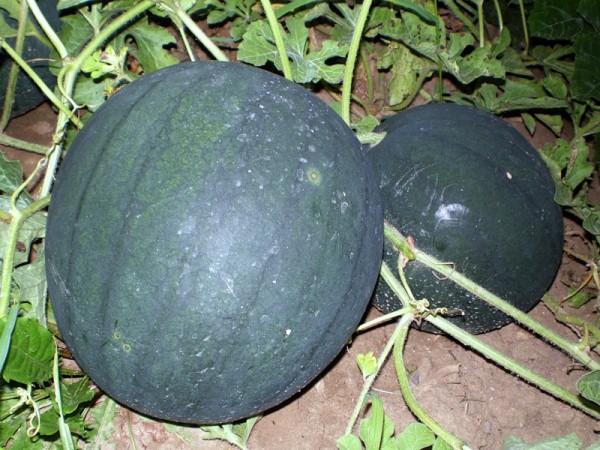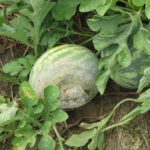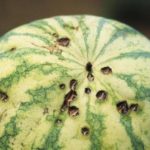Watermelon Sugar Baby - called sugar baby because of the amazingly delicious sweet flesh and low weight. This is a beautiful early ripe variety, can be grown both in the open air and in the greenhouse.
Table of contents
Description and characteristic of a grade of a water-melon sludge Baby
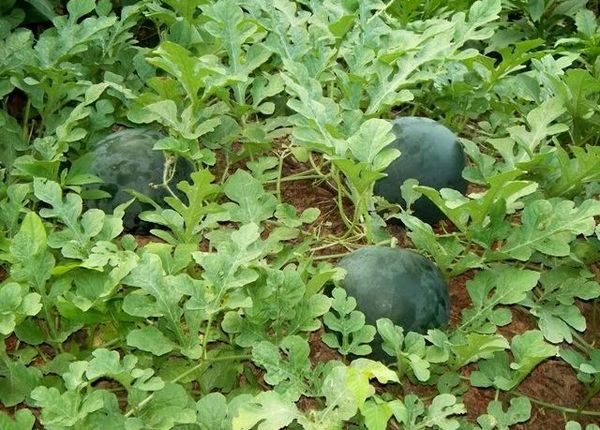
This sweet berry is perfect for growing in the southern regions, both on an industrial scale and in small summer cottages. Sugar Baby is a hybrid obtained by French breeders.
This gourd crop has dark green peel and red sweet pulp with a small amount of seeds. Berry weight ranges from 3 before 5 kilograms.
This variety is unpretentious and suitable for growing not only in the middle lane and southern regions, but also in the northern regions. Even in Siberia, you can get a good harvest of watermelon of this variety, but under the condition of good light.
This variety is early ripening, it takes about 85 days from the time the seeds are planted until the harvest.

Variety refers to high-yielding, from one plant per season can be obtained from 6 before 12 kilograms of ripe berriesThis is 8-10 kilograms per square meter of land.
This variety can be grown in the northern regions, but in greenhouse conditions.
Breeding history and region of growth
The ancestors of modern watermelons differ not only in appearance but also in taste. These are wild plants from the desert of Namibia, no larger than a lemon with tasteless fresh and sometimes bitter pulp..
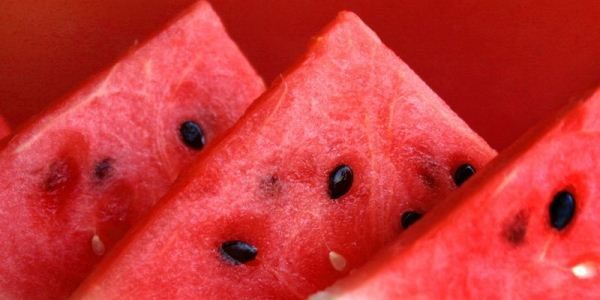
Many centuries ago, such berries were the only source of moisture for caravans crossing the desert. It was with travelers that wild watermelons first came to the Middle East, and then to Asia.
To cultivate this culture began only in ancient Egypt., but the plant did not have a bright core and sweet taste. Europeans became acquainted with the taste of watermelons only in the 18th century.
Only a hundred years ago, watermelons appeared, in taste, color and aroma, reminiscent of modern classical melon crops.
Now you can find watermelons of almost any color and shape. Breeders bred hybrids with yellow or white flesh. The Japanese learned to grow square watermelons.

Now you can grow a hybrid weighing 90 kilograms or more.
Advantages and disadvantages
About the Sugar Baby variety there are mostly only positive reviews. Agrotechnics and gardeners love to grow it because of the following positive points:
- Simplicity. It grows well and brings excellent yield even in adverse climatic conditions;
- Beautiful honey taste and floral scent;
- Thin peel;
- Early ripening period;
- Ease in the care;
- Resilience to diseases;
- Lovely transportability;
- Long shelf life.
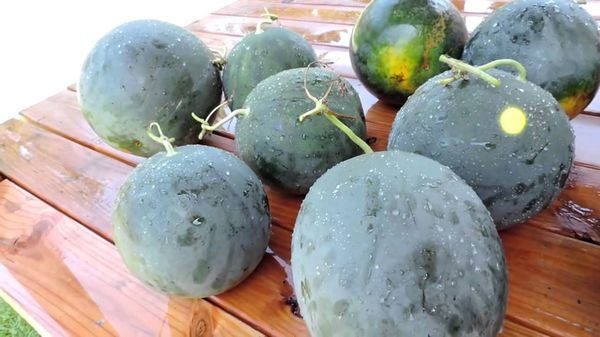
Single drawback This sort of gardeners consider a small weight.
Features of sowing and cultivation
The most suitable areas for growing this variety are Central and Central Russia, as well as the Volga region. It is in such a favorable climate that most sugar melons ripen. But this does not mean that you should not try to get a good harvest of the “Sweet Baby” in other regions of the country, subject to transplanting and growing it for some time under the filmIt is possible to get a good harvest in the northern regions.
Landing
Cultivation is carried out by planting seeds in open ground or seedlings. Depending on climatic conditions, the summer resident himself selects the most favorable method. Landing directly into the ground can be made in the southern areas, provided the soil is heated at a depth of 10 centimeters to 16-18 degrees.
Before sowing, disinfect seeds.. They fall into a weak solution of manganese, then thoroughly washed with water. After that, the seeds should be left in a humid environment for 24 hours, this will facilitate the growth.
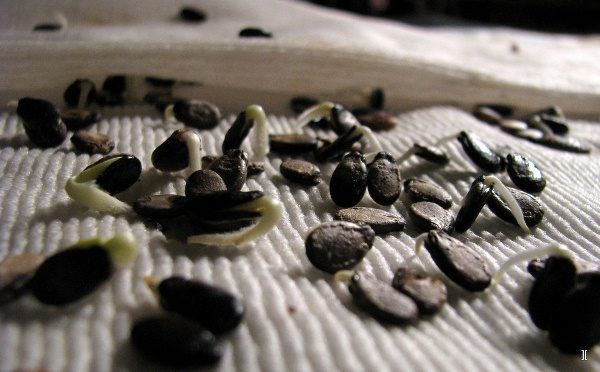
When planting seeds on the beds, the scheme is 140 by 100 centimeters, for the greenhouse - 70 by 70 centimeters. The soil should be loose and well hydrated. The seeds are laid down to a depth of 5 centimeters. You can protect a seed planted in open ground from temperature fluctuations and pests using a can, which will perform the functions of a small greenhouse. When the plant grows and strengthens the jar can be removed.
Sowing seed for seedlings is carried out in late April. As soon as there are 3 leaves on the saplings, they are ready to be transplanted into the open ground. Seeds are planted in late May.
Care
Watermelon Shuga Baby does not require any special care. Watering the plants is best done in the evening at the rate of 30 liters of water per square meter. When will begin to form the ovary watering is limited.
If at the time of formation of the ovaries the rainy season began, then the bed should be covered with foil.
Caring for a plant is reduced to the following activities:
- Watering. As the plant grows and flowers form, watering is done as soon as the soil is dry. When forming the ovaries, it practically stops;
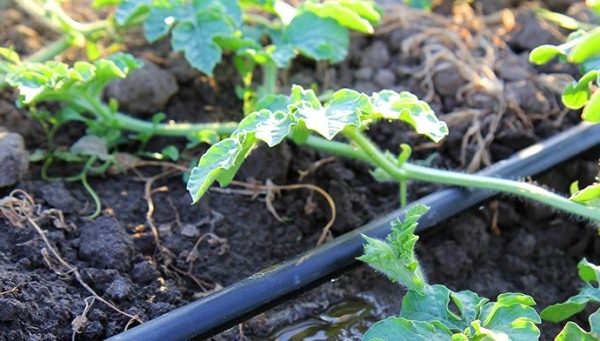
- Weeding. This is a prerequisite for a good harvest, as long as the plant has not grown,intensive reproduction of weeds can destroy it;
- Permanent loosening topsoil;
- Breaking off the side shoots and excess ovaries.
Top dressing
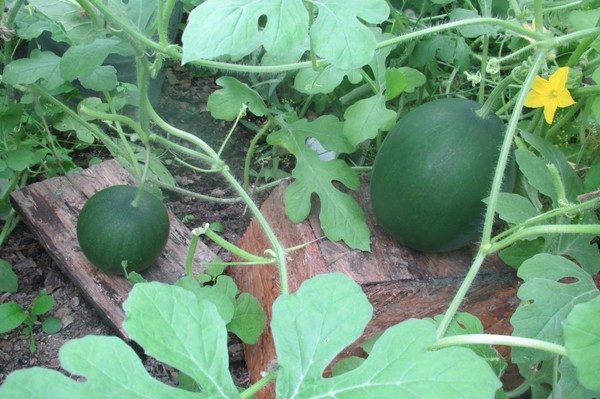
Feed the plant should be in the period of formation of ovaries and ripening berries. The most suitable are mineral fertilizers containing phosphorus and calcium, it is possible to add azofoski. Before applying fertilizer should carefully read the instructions, as each fertilizer has its own individual characteristics.
Harvesting
Harvesting begins in mid-August and ends in September.
In order to stock up on seeds, you can try to extract them from ripe watermelons. But do not forget that A sweet baby is a hybrid, and it is not clear what fruit will grow from the resulting seed.. Therefore, it is better to use seeds purchased in specialized stores.
Features grade
Variety Sugar Baby or Sweet baby has its own distinctive features:
- Sweet Baby - the most popular variety of watermelon in the world;
- The best berry for salting;
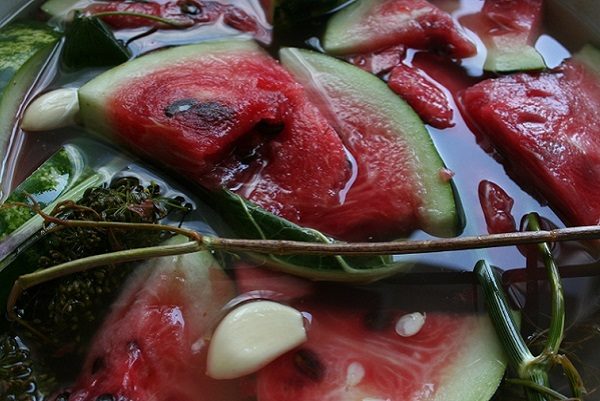
- It has a very deep root system, so the plant tolerates dry seasons;
- Honey taste of pulp;
- Perfectly round fetus shape.
Diseases and pests
This kind of gardeners love for resistance to most common melon diseases, especially to fusarium.
In order to protect your crop, you must make the following preventive measures:
- Soil disinfection;
- Disinfection of seeds.
From the majority of diseases rescues preheating of seeds to 50 degrees for two hours.
The most common diseases of melons are the following:
- Sclerotinia or white rot. A solution of copper sulfate, which is sprayed on unaffected plants, is suitable for the fight. Diseased plants are pulled out and destroyed;
- Black rot. Fungal disease from which the plant quickly decays and dies.In order to avoid total fusion, affected shoots and fruits should be removed. All plants and soil are treated with a solution of chlorine copper;
- Bacteriosis. Very dangerous disease. If there are white spots on the leaves, and then holes in their place, then the plant should be uprooted and destroyed. The rest of the area is treated with a solution of Fenithurum.
- Black rot on watermelon leaves
- Sclerotinia or white rot
- Bacteriosis
The most common pests are:
- Gourd aphid. Most often, this pest accumulates on the underside of the leaf and stem. Eating the sap of the plant, the aphid can destroy an adult shoot in a few days;
- Wireworm;
- Spider mite.
- Spider mite
- Gourd Aphid
- Wireworm
To prevent these pests from occurring conduct regular weed control. Prophylactic sprays with a decoction of onion peel, soapy water or specialized preparations help well.
In order to grow a good harvest of watermelon Sugar Baby on your site need to apply a little care and attention. Even an aspiring gardener can grow a sweet, juicy fruit.
